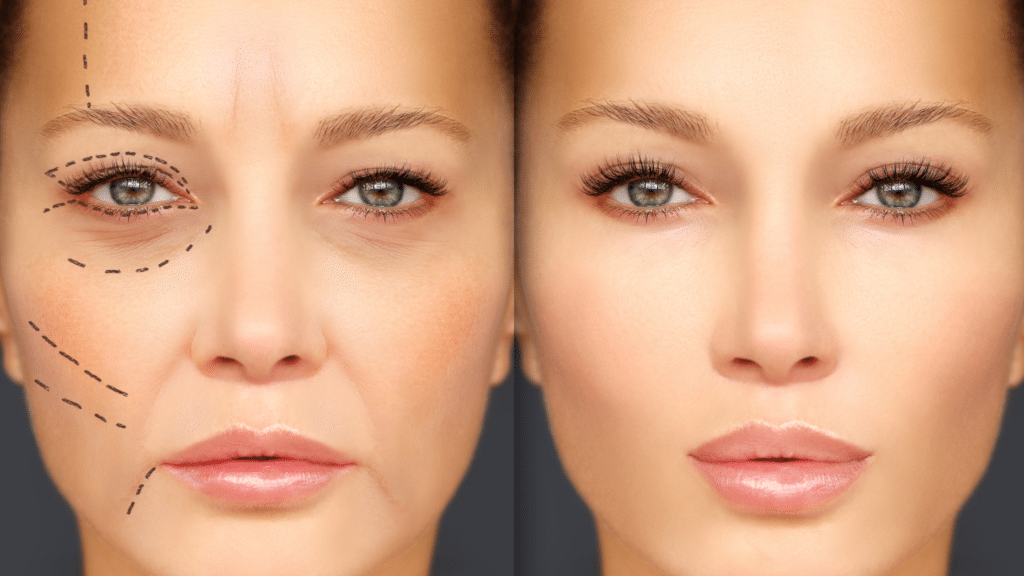In a world where invasive fat reduction procedures like liposuction have long been the go-to, CoolSculpting emerges as a groundbreaking alternative. This non-invasive technique promises to freeze away stubborn fat without the downtime or risks associated with surgery. It’s not just about looking good; it’s about feeling confident in your own skin, without having to endure the stress and recovery time of traditional methods. Whether you’re aiming to refine and contour your body shape or tackle those pesky areas that don’t seem to budge with diet and exercise, CoolSculpting offers a safe and effective solution.
Understanding CoolSculpting Mechanics
Cryolipolysis Science
Cryolipolysis stands at the heart of CoolSculpting. This innovative technology targets and freezes fat cells beneath the skin without harming surrounding tissues. It leverages controlled cooling to bring fat cells down to a temperature where they crystallize and die.
The body then naturally processes these dead cells, removing them over time. This method ensures that treated areas gradually slim down without any invasive procedures.
Cooling Panels
CoolSculpting employs specialized cooling panels designed to target specific areas of the body. These panels apply precise temperatures, effectively crystallizing fat cells while leaving the skin unharmed.
Patients feel a cold sensation, but it’s generally not painful. The precision of these panels means treatments can be tailored to individual needs, focusing on problem areas for more effective results.
Results Timeline
Seeing results from CoolSculpting is a gradual process. Initial changes may appear as soon as three weeks after treatment, with the most significant impact visible after two months. The body continues to flush out fat cells for up to four to six months post-treatment.
This timeline highlights the non-instantaneous nature of CoolSculpting but assures patients that their patience pays off with lasting reductions in unwanted fat.
CoolSculpting Treatment Areas
Abdomen Fat
CoolSculpting effectively targets stubborn body fat around the abdomen. Many people struggle with this area despite diet and exercise. The treatment freezes fat cells, leading to their elimination.
It’s a popular choice for those looking to reduce bulges in the midsection. Results can significantly improve waistline contour.
Thigh Contour
Thighs are another common target area, both for the inner and outer parts. CoolSculpting helps in smoothing out thigh contours by reducing fatty tissue.
This procedure can create a more toned appearance, especially beneficial for those who have struggled with thigh fat despite active lifestyles.
Chin & Neck
Subcutaneous fat under the chin and around the neck can be difficult to lose. CoolSculpting offers a non-surgical solution to diminish these fat deposits.
The treatment enhances facial definition by targeting and eliminating unwanted fat cells in these areas.
Back & Arms
Back and upper arms often accumulate fat bulges that are hard to eliminate through exercise alone. CoolSculpting can sculpt these areas by focusing on specific pockets of fat.
It’s effective in creating a more defined appearance, contributing to an overall slimmer look.
Preparing for Your CoolSculpting Session
Consultation First
Before diving into the cosmetic procedure, it’s crucial to consult with a certified CoolSculpting provider. They will map out a personalized treatment plan tailored to your needs. This step ensures you understand the process, including how cold temperatures target fat cells.
Consultations also offer a chance to ask questions about this fat reduction method. You can learn about areas treated in previous sessions, like the submandibular region or around the bra line.
Dress Comfortably
On the day of your session, wearing comfortable clothing is key. Opt for loose-fitting clothes that allow easy access to the treatment area.
Bringing something to read or watch can help pass time comfortably during your session. Many people find this cosmetic procedure manageable when they’re distracted by their favorite show or book.
Pre-Treatment Tips
To minimize potential side effects, staying hydrated is essential before undergoing CoolSculpting. Drinking plenty of water aids in maintaining optimal health and enhances results.
Avoid anti-inflammatory medications before treatment as they can increase the risk of bruising post-session. Following these guidelines helps ensure a smoother recovery and better outcomes from this innovative fat reduction method.
What to Expect During Treatment
Initial Sensation
Patients often report feeling a cooling sensation at the start of their CoolSculpting session. This sensation typically gives way to numbness as the area being treated becomes cold. It’s a unique experience, contrasting sharply with other cosmetic procedures.
The initial cold might be surprising but quickly becomes tolerable. This phase is critical for the success of the treatment, targeting fat cells directly.
Session Duration
A single CoolSculpting session can last between 35 and 60 minutes per treatment site. The length depends on the size and number of areas being addressed.
Most patients find this time manageable, often reading or using their phones during the procedure. It’s an efficient use of time, considering the potential benefits.
Post-Procedure
After CoolSculpting, most individuals can resume normal activities immediately. There’s no required recovery period, making it an attractive option for those with busy schedules.
This lack of downtime is a significant advantage over more invasive procedures like surgery. Patients appreciate the convenience and ease post-treatment.
Post-Treatment Expectations
Recovery Time
After CoolSculpting, patients often experience mild redness, swelling, and tenderness in the treated areas. These symptoms are temporary and usually subside within a few days to weeks. It’s crucial for clients to understand that these signs indicate the body is naturally processing and eliminating the frozen fat cells.
Most individuals can return to their daily activities immediately after treatment without any significant downtime. This makes CoolSculpting an attractive option for those seeking fat reduction without the need for surgery.
Full Results
Patience plays a key role in the post-treatment phase. While some may notice changes as early as three weeks after treatment, full results can take up to three months to become visible. This timeline is due to the body’s gradual elimination of dead fat cells through its natural metabolic processes.
Clients should not be discouraged if they don’t see immediate results; it’s part of the journey towards achieving their desired outcome.
Healthy Lifestyle
To enhance and prolong the effects of CoolSculpting, maintaining a healthy lifestyle is essential. A balanced diet and regular exercise can help sustain results and contribute to overall well-being.
Risks and Side Effects
Common Effects
After understanding what to expect post-treatment, it’s crucial to know the potential risks and side effects. Temporary numbness, redness, and minor bruising are common after undergoing CoolSculpting. These side effects typically resolve on their own without needing additional treatment.
Patients may also experience sensations of cramping or slight discomfort in the treated areas. While these symptoms can be unsettling, they usually diminish within a few days to weeks.

Serious Risks
Though rare, more severe complications can occur. One such complication is paradoxical adipose hyperplasia—a condition where the treated fat cells increase rather than decrease in size. This outcome is unusual but poses a significant concern for those affected.
Another serious risk involves nerve pain or damage if the procedure affects underlying nerves. Such cases require immediate medical attention to prevent long-term issues.
Provider Importance
The role of an experienced and licensed provider cannot be overstated in minimizing risks associated with CoolSculpting. A skilled professional will not only ensure the procedure’s safety but also significantly reduce the likelihood of experiencing severe side effects.
They assess individual factors like skin condition, lifestyle habits, and existing health disorders before recommending treatment. This personalized approach helps tailor the procedure to each patient’s needs while aiming for optimal results with minimal complications.
Assessing CoolSculpting Effectiveness
Before-and-After
To gauge the success of CoolSculpting, before-and-after photos serve as a clear visual evidence. These images highlight the changes in the treated areas, making it easier for patients to see the reduction in fat.
Professionals often take these photos from multiple angles to provide a comprehensive view of the results. Such comparisons are vital for assessing the effectiveness and setting realistic expectations.
Body Measurements
Another method to measure CoolSculpting’s impact is through precise body measurements. This approach helps quantify the changes, offering concrete data beyond visual assessment.
Technicians typically record measurements of the targeted areas before treatment and during follow-up visits. This practice allows both practitioners and patients to track progress accurately over time.
Fat Reduction Rates
Most individuals experience a 20-25% reduction in fat thickness within treated regions after their CoolSculpting session. This significant decrease is usually noticeable within three weeks but may continue improving up to six months post-treatment.
However, achieving optimal outcomes might require more than one session, especially for those targeting larger fat deposits or multiple areas.
Who Benefits from CoolSculpting
Ideal Candidates
Ideal candidates for CoolSculpting are individuals who are close to their target weight but struggle with stubborn fat areas. These are the pockets of fat that seem immune to diet and exercise efforts.
People in this category often find traditional weight loss methods ineffective for specific problem areas, like the lower abdomen or thighs. They seek a non-invasive solution that offers targeted results without surgery.
Medical Restrictions
Not everyone is a suitable candidate for CoolSculpting. People with certain medical conditions, such as cryoglobulinemia, should avoid this procedure.
Cryoglobulinemia is a condition where proteins in the blood clump together at lower temperatures, potentially leading to severe complications if subjected to CoolSculpting’s cooling technology. It highlights the importance of disclosing all health information during consultation.
Consultation Importance
It’s crucial to consult with a CoolSculpting specialist before deciding on this treatment.
This step ensures that your individual goals and expectations align with what CoolSculpting can realistically offer. A specialist can assess whether your specific fat reduction needs match the capabilities of CoolSculpting, considering both your physical suitability and any medical restrictions you might have.
Final Remarks
CoolSculpting offers a groundbreaking way to sculpt your body by freezing away unwanted fat without surgery or downtime. Understanding the mechanics, treatment areas, preparation, and what to expect during and after treatment helps you make an informed decision. Knowing the risks and assessing effectiveness ensures you’re equipped with the knowledge to decide if CoolSculpting is right for you. Remember, it’s not a one-size-fits-all solution but can be incredibly beneficial for those looking to target specific areas of stubborn fat.
If you’re ready to take the next step towards achieving your body goals, consider scheduling a consultation with a qualified CoolSculpting provider. They’ll work with you to create a customized plan that aligns with your objectives. Don’t let stubborn fat hold you back any longer. Explore CoolSculpting today and see how it can transform your body and boost your confidence.
Frequently Asked Questions
What is CoolSculpting and how does it work?
CoolSculpting is a non-invasive fat reduction procedure that uses controlled cooling to eliminate stubborn fat cells. The process targets and freezes fat cells, which are then naturally processed and eliminated by the body.
Can CoolSculpting be used on all parts of the body?
CoolSculpting is versatile and can target various areas including the abdomen, thighs, flanks, back, under the chin, and upper arms. Each area requires specific applicators designed for optimal results.
How should I prepare for a CoolSculpting session?
Preparing for CoolSculpting involves consulting with a specialist to discuss your goals and medical history. It’s essential to maintain a healthy lifestyle before treatment. Avoid anti-inflammatory medications before your session as they can increase bruising.
What sensations will I experience during my CoolSculpting treatment?
During CoolSculpting, you’ll feel intense cold initially but this sensation usually subsides as the area becomes numb. Some individuals also experience pulling or mild pinching due to the vacuum application but these are generally tolerable sensations.
What should I expect after my CoolSculpting treatment?
Post-treatment, you may notice redness, swelling, or slight bruising in the treated area; however, these are temporary. Most people resume normal activities immediately after their session without any significant downtime.
Are there any risks associated with CoolSculpting?
While considered safe for most people, some may experience side effects like temporary numbness, redness, swelling, bruising or skin sensitivity at the treated site. Serious complications are rare when performed by a qualified professional.
Who is an ideal candidate for CoolSculpting?
Ideal candidates for CoolScultping are those close to their desired weight but struggling with localized fat pockets that resist diet and exercise efforts. It’s not intended as a weight loss solution but rather as a way to refine body contours.











